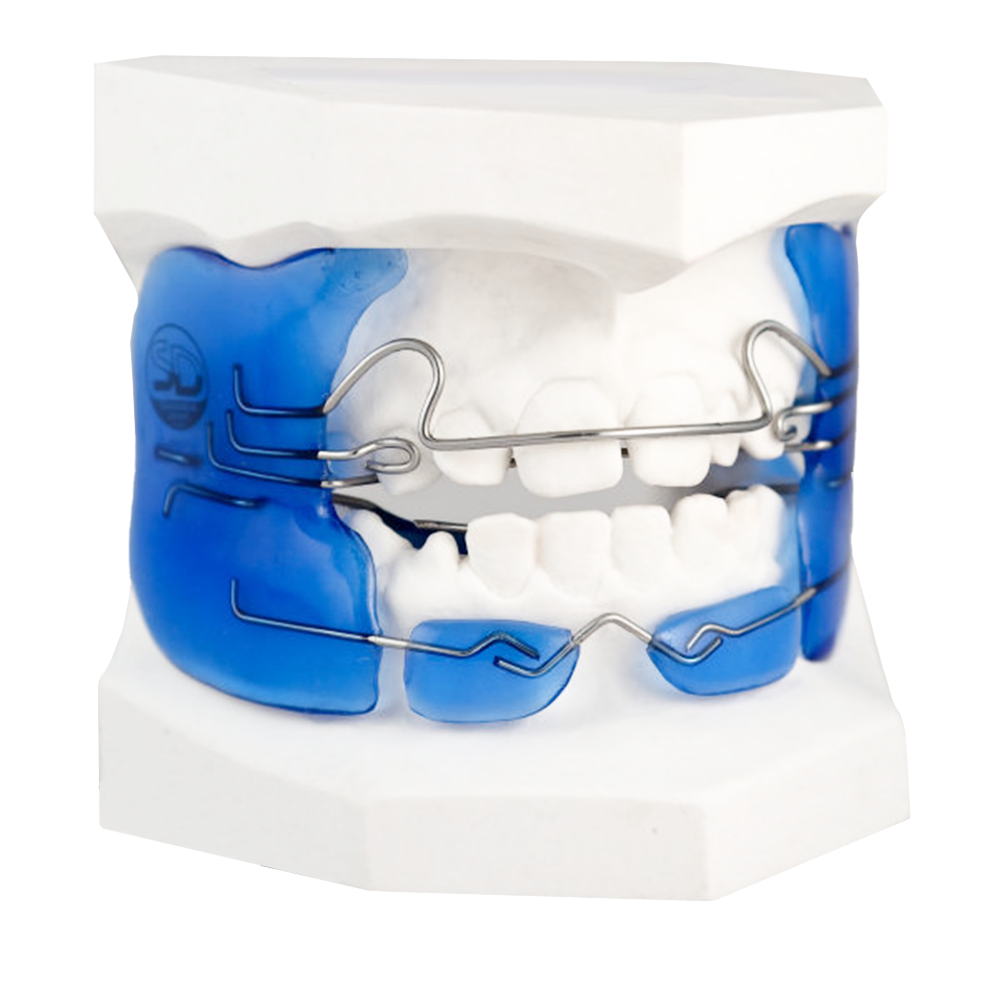Fränkel appliance
Bimaxillary or also known as functional appliances, which cover both jaws.
They can be used in mixed dentition, possibly in mixed dentition.
Preparation: an adequate impression, including the bend and the frenulum, is required! If necessary, raise the edges of the impression channel.
Wearing time: 20 hours a day for years.
No activation is required, except presetting if needed.
Fränkel I.
Indication: used in cases of Angle I or Angle II/1 for arch expansion, to adjust the anterior teeth with springs behind the upper labial arch and lower anterior teeth. The lower pads prevent the lower lip from biting under the upper incisors. The bite height is maintained by the upper canine supports for a construction bite. The eruption of the upper sixths is prevented by the occlusal surface supports (Harvold effect). An acrylic plate rests on the sublingual part of the mandible, projecting the mandible forward. Optionally, a bilateral screw can be placed to activate the appliance anteriorly.
Fränkel II.
Used in anomalies of Angle II/2, with a spring support behind the upper front teeth and no canine support. In severe Angle II/1, it can be used to prevent excessive and rapid backward tilting of the front teeth, or when the canines are missing.
Fränkel III.
Used in Angle III anomalies, chances are good if there is a dental problem or a case of maxillary retrognathia. In cases of true progenia, we can hope for success, but these cases are usually completed in the operating theatre.
The appliance is like an upside-down FR I. The palatal connector runs behind the last upper tooth. To take advantage of the Harvold effect, the chewing surface support is placed on the lower molar, designed so that it does not obstruct the backward movement of the lower teeth or mandible.
Fränkel IV.
Used in Angle I type anterior open bite cases.
- type: Bimaxillary Devices

